Abstract
The purpose of this study was to determine the effect of sodium hypochlorite and steam autoclaving on the cyclic fatigue of nickel-titanium endodontic files.
Two types of files with a .06 taper and #30 were used, K3® (SybronEndo, Glendora, California, USA) and Hero642®(Micro-Mega, Besançon, France).
The files were divided into 6 experimental groups containing 10 files each group depending the soaking time in 6% sodium hypochlorite solution and number of cycles of steam autoclave. After sterilization, a cyclic fatigue test was performed on each file, and the fracture time was recorded in seconds. The control group underwent the cyclic fatigue test only. After the test, the surface characteristics of the files were observed using scanning electron microscopy (SEM).
All groups containing the Hero 642® files showed a similar cyclic fatigue fracture time. However, the cyclic fatigue fracture time with the K3® files was significantly shorter in groups which were treated with sodium hypochlorite than in the control group (P < 0.05). SEM revealed both Hero642® and K3® files to have significant corrosion on the file surface in groups treated with sodium hypochlorite, compared with the sharp and regular blades of the control group. K3® files showed more corrosion than the Hero642® files. Bluntness of the blades of the K3® file was observed in groups treated with steam autoclave. Although there was no obvious destruction on the surface of steam autoclaved Hero642® files, slight bluntness was observed.
Sterilizing with a steam autoclave is much less destructive to K3® files than sodium hypochlorite. The longer time exposed to sodium hypochlorite, the more destructive pattern was shown on the blades of the files. Therefore, when using sodium hypochlorite solution, the exposure time should be as short as possible in order to prevent corrosion and increase the cyclic fatigue fracture time.
참고문헌
1. Walia H, Brantley WA, Gerstein H. An initial investigation of the bending and torsional properties of Nitinol root canal files. J Endod. 14:346–351. 1988.

2. Glosson CR, Haller RH, Dove SH, Del Rio CE. A comparison of root canal preparations using Ni-Ti hand, Ni-Ti engine-driven, and K-Flex endodontic instruments. J Endod. 21(3):146–151. 1995.

3. Gambill JM, Alder M, Del Rio CE. Comparison of nickel-titanium and stainless steel hand-file instrumentation using computed tomography. J Endod. 22(7):369–375. 1996.

4. Thompson SA, Dummer PMH. Shaping ability of ProFile.04 taper series 29 rotary nickel-titanium instruments in simulated root canals. Part 1. Int Endod J. 30:1–7. 1997.
5. Serene TP, Adams JD, Saxena A. Nickel-Titanium instruments : Applications in Endodontics. St Louis: Ishiyaku EuroAmerica, Inc.;1995.
6. Pruett JP, Clement DJ, Carnes DL Jr. Cyclic fatigue testing of nickel-titanium endodontic instruments. J Endod. 23(2):77–85. 1997.

8. Silvaggio J, Hicks L. Effect of heat sterilization on the torsional properties of rotary nickel-titanium endodontic files. J Endod. 23(12):731–734. 1997.

9. Stokes O, Fiore P, Barss J, Koerber A, Gilbert J, Lautenschlager E. Corrosion in stainless steel and nickel-titanium files. J Endod. 25(11):731–735. 1999.
10. Hal¨kel Y, Serfaty R, Wilson P, Speisser J, Alleman C. Mechanical properties of nickel-titanium endodontic instruments and the effect of sodium hypochlorite treatment. J Endod. 24(11):731–735. 1998.
11. Schneider SW. A comparison of canal preparations in straight and curved root canals. Oral Surg Oral Med Oral Pathol. 32(2):271–275. 1971.

12. American Dental Association. Council on dental materials and devices. specification No. 28 for endodontic files and reamers. J Am Dent Assoc. 93(8):831–817. 1976.
13. Hal¨kel Y, Serfaty R, Bateman G, Senger B, Alleman C. Dynamic and cyclic fatigue of engine-driven rotary nickel-titanium endodontic instrument. J Endod. 25(6):434–440. 1999.
14. Yared G, Dagher F, Machtou P. Cyclic fatigue of Profile rotary instruments after simulated clinical use. Int Endod J. 32:115–119. 1999.

15. Yared G, Dagher F, Machtou P. Cyclic fatigue of Profile rotary instruments after clinical use. Int Endod J. 33:204–207. 2000.

16. Fife D, Gambarini G, Britto L. Cyclic fatigue testing of Protaper NiTi instruments after clinical use. Oral Surg Oral Med Oral Pathol Oral Radiol Endod. 97:251–256. 2004.
17. Turpin YL, Chagneau F, Vulcain JM. Impact of two theoretical cross-sections on torsional and bending stressess of nickel-titanium root canal instrument models. J Endod. 26(7):414–417. 2000.
18. Gambarini G. Cyclic fatigue of nickel-titanium rotary instruments after clinical use with low- and high-torque endodontic motors. J Endod. 27(12):772–774. 2001a.
19. Li U, Lee B, Shih C, Lan W, Lin C. Cyclic fatigue of endodontic nickel-titanium rotary instruments : static and dynamic tests. J Endod. 28(6):448–451. 2002.
20. Gambarini G. Cyclic fatigue of Profile rotary instruments after prolonged clinical use. Int Endod J. 34:386–398. 2001b.

21. Thierry B, Tabrizian M, Savadogo O, Yahia L’H. Effect of sterilization process in NiTi alloy : surface characterization. J Biomed Mater Res. 49(1):88–98. 2000.
Figure 3.
Cyclic fatigue fracture time of K3® (sec) (Mean ± SD).
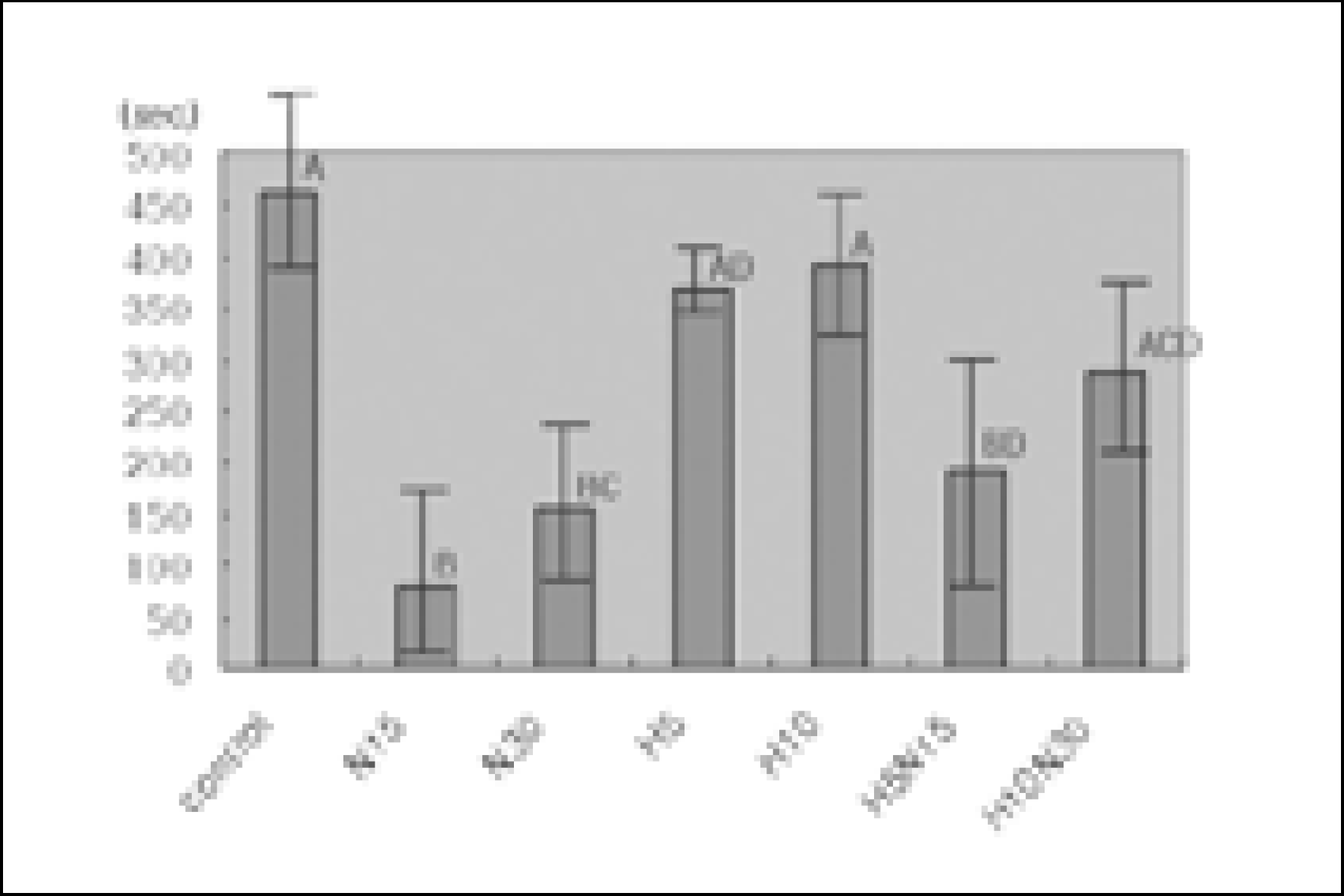
A, B, C, D means that the same letters are not significantly different.
Table 1.
Pretreatment of each groups before cyclic fatigue test




 PDF
PDF ePub
ePub Citation
Citation Print
Print


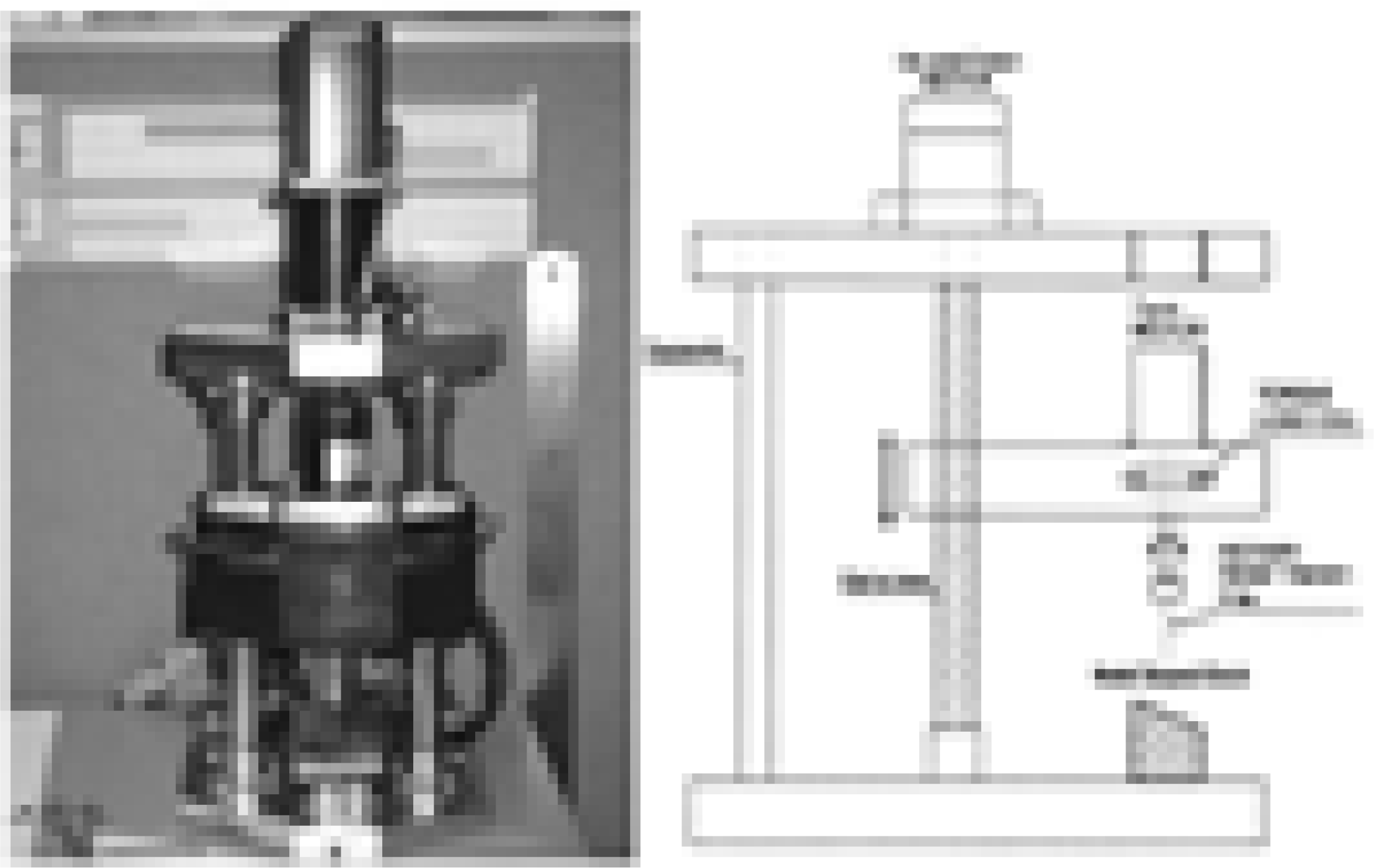
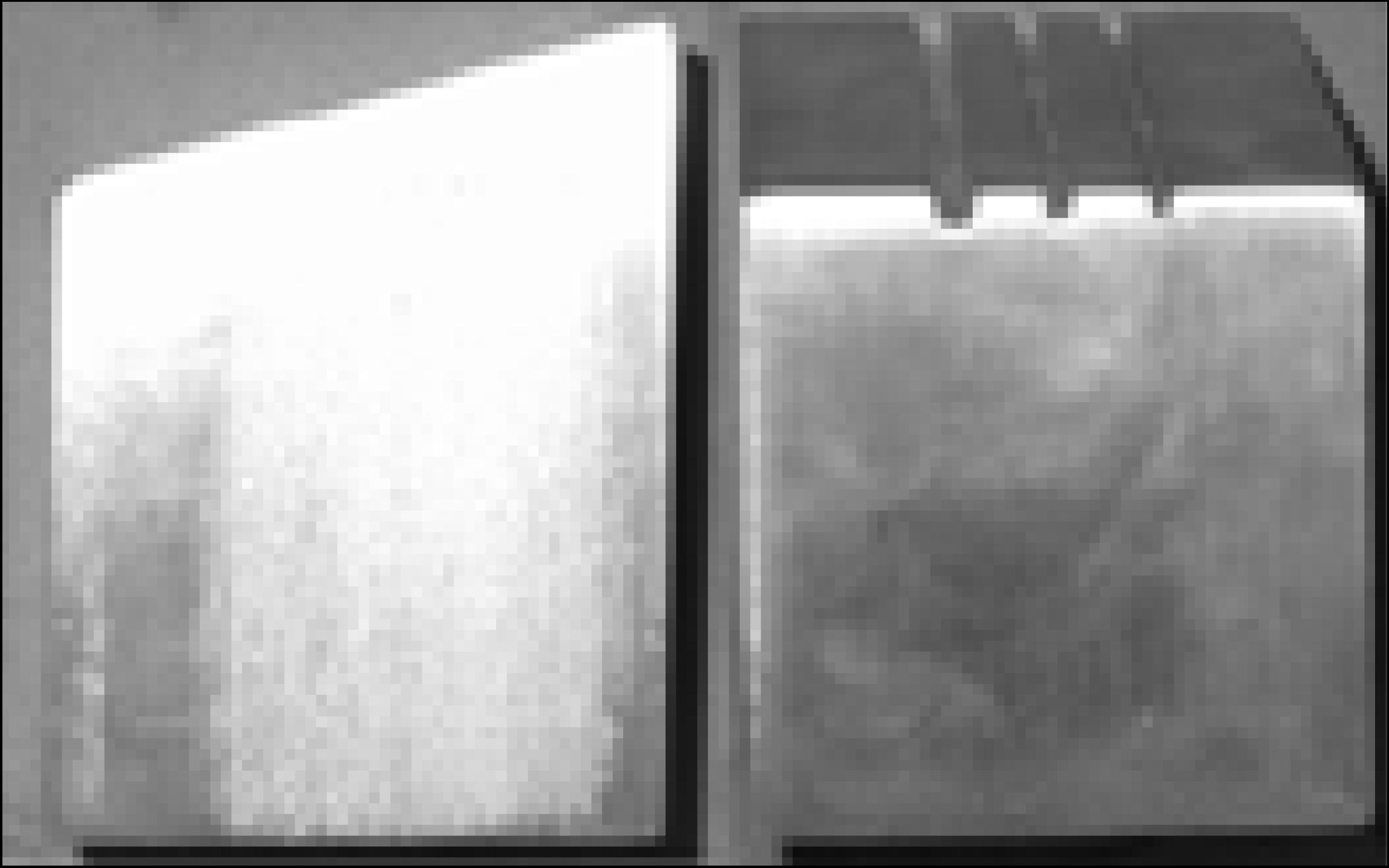
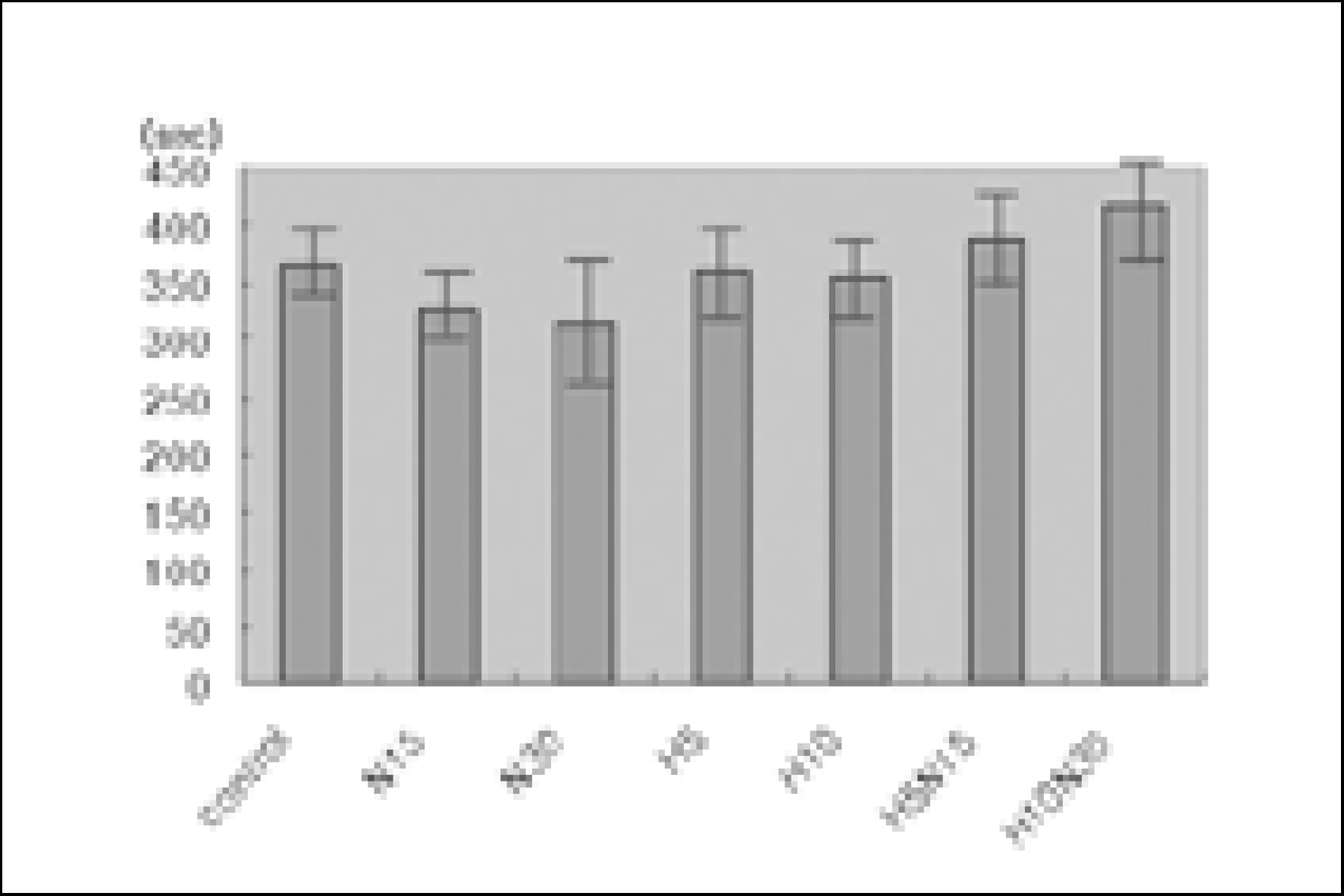
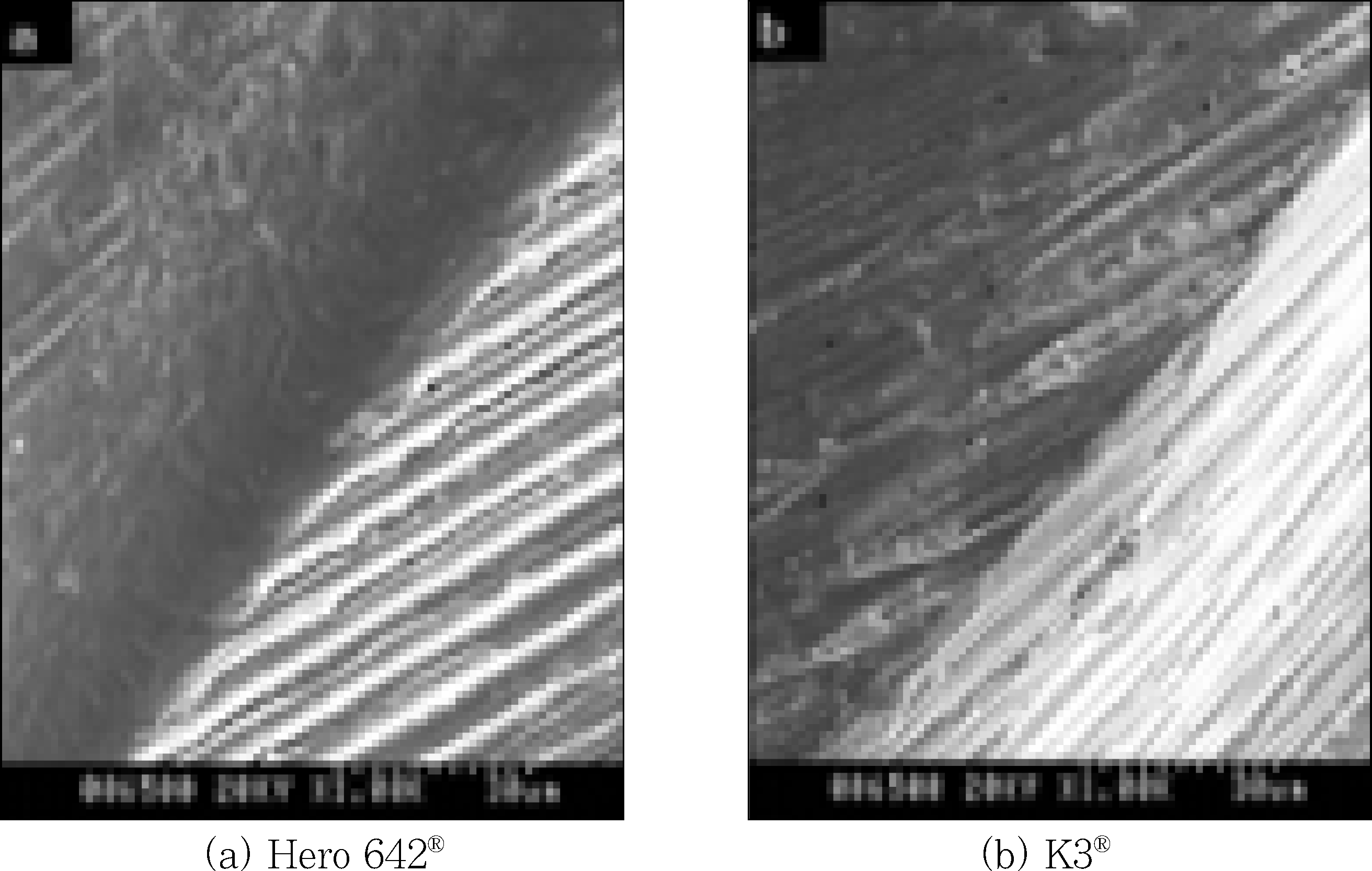
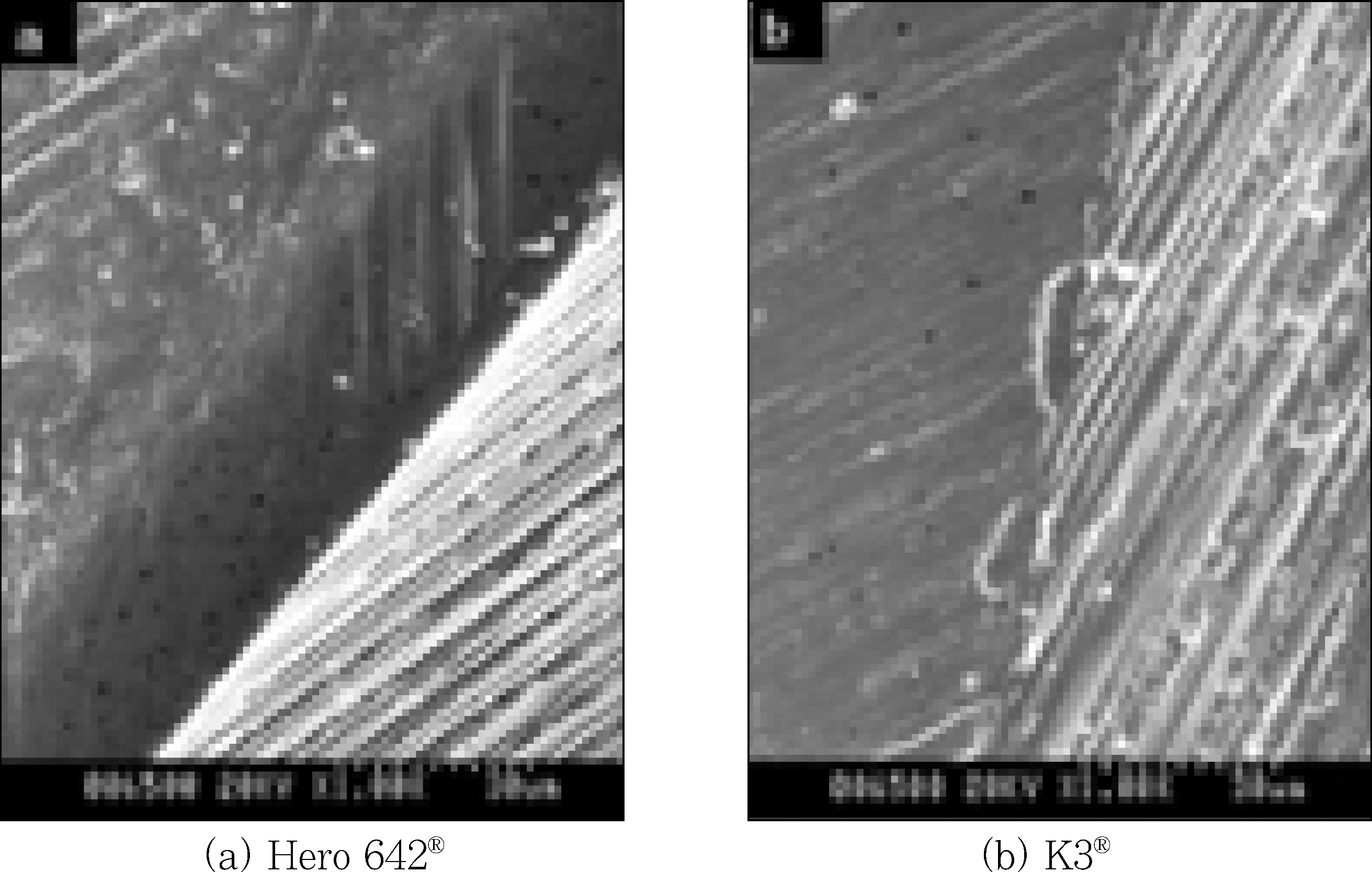
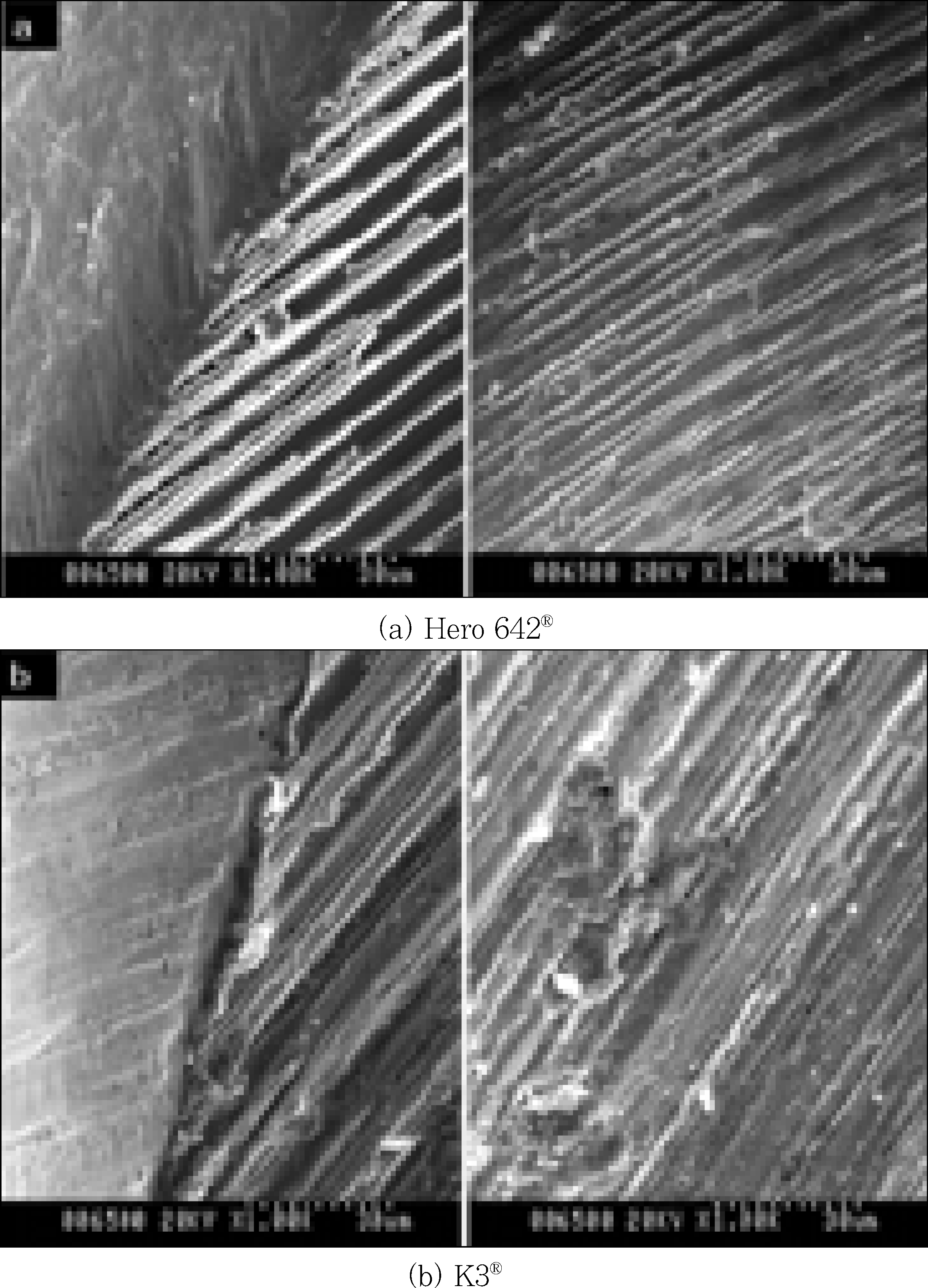
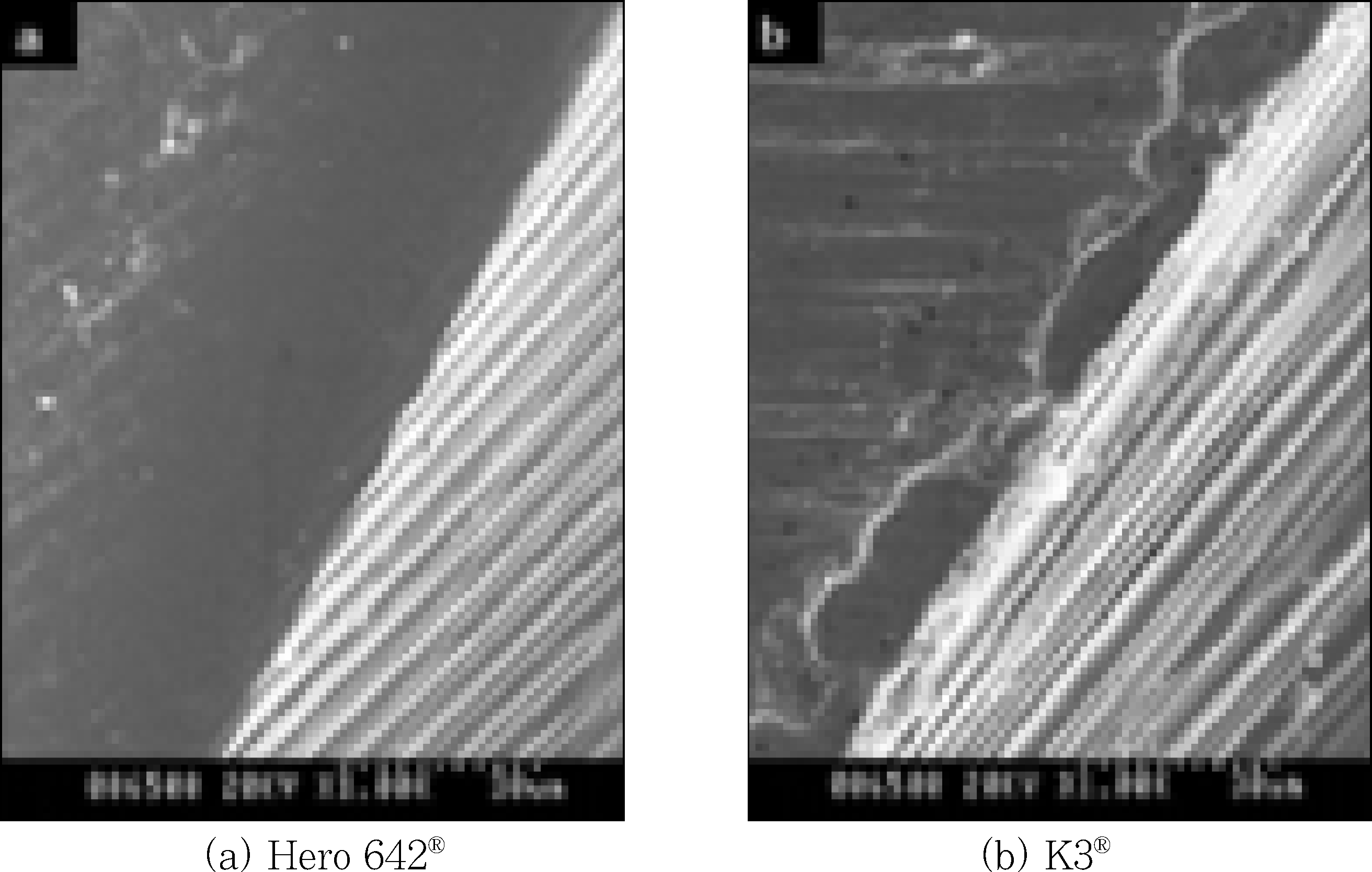
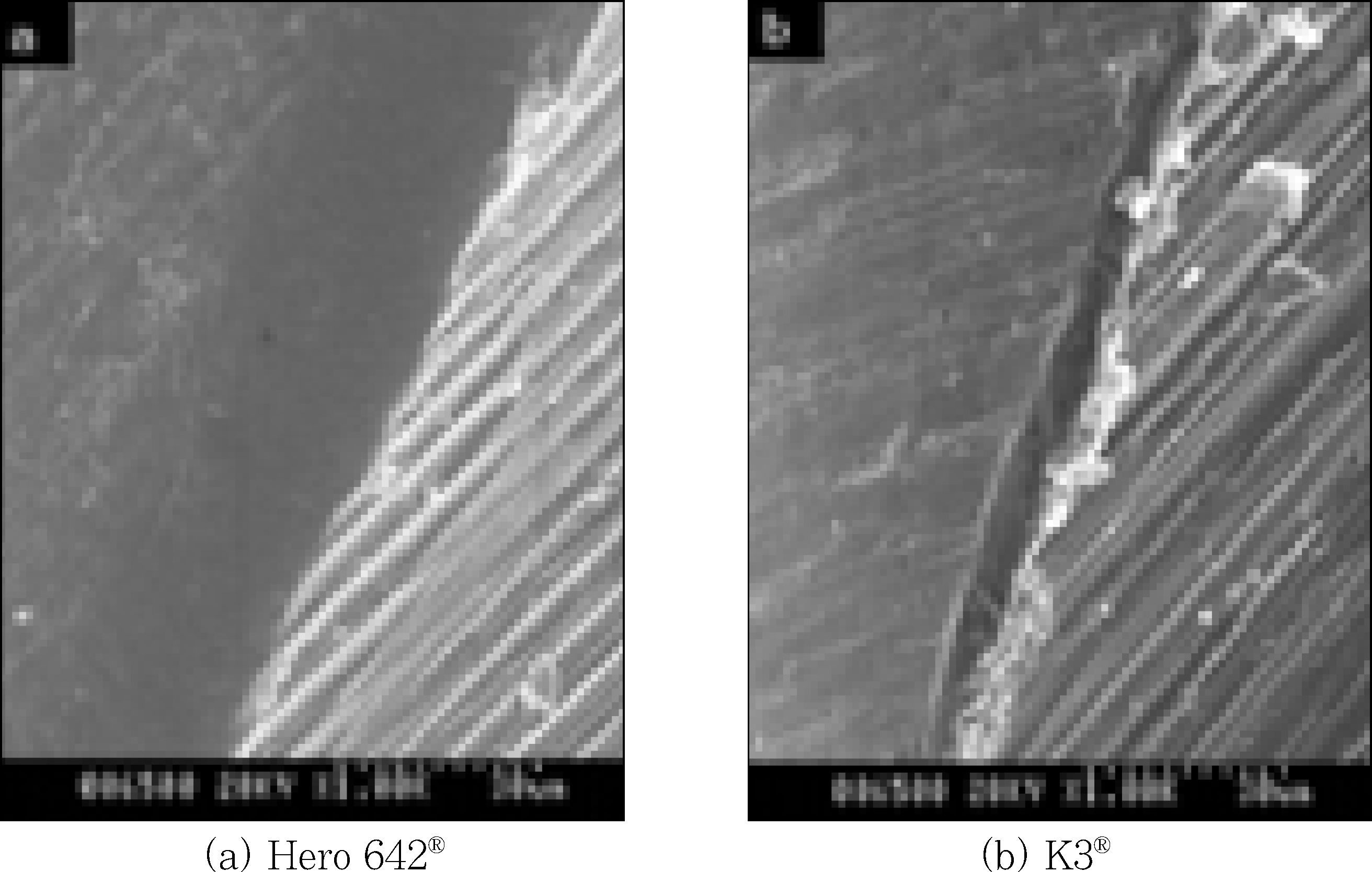
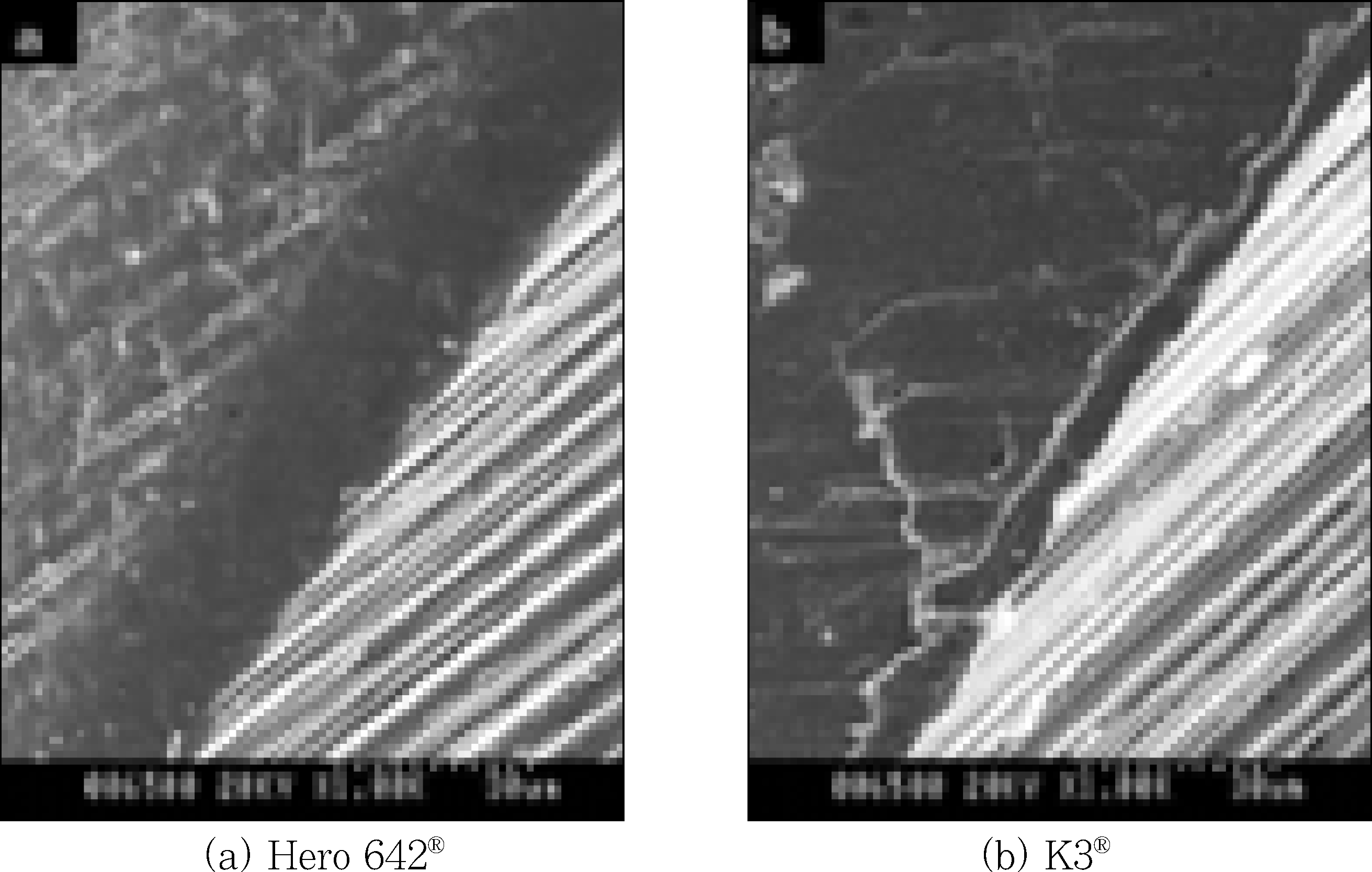
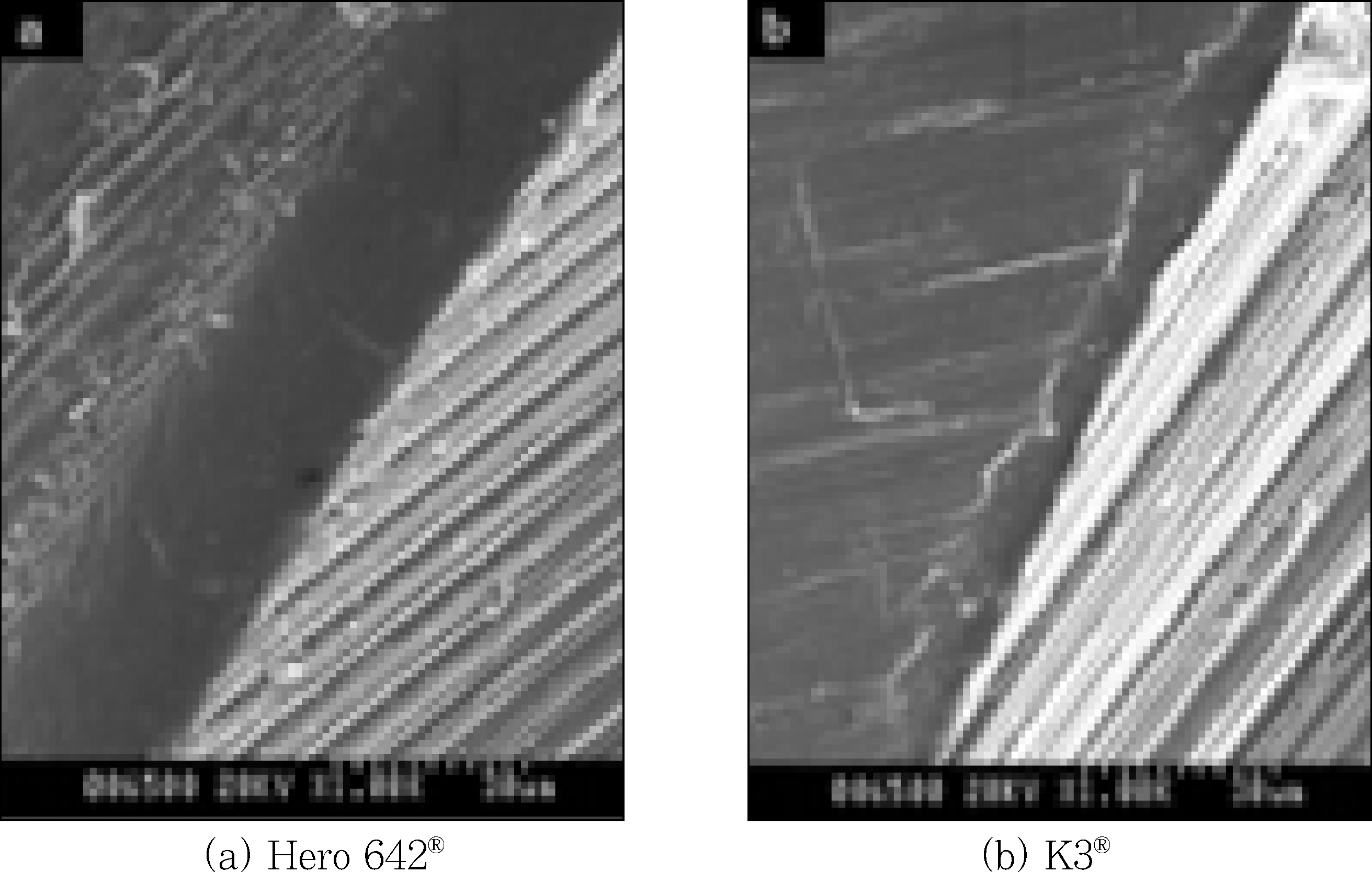
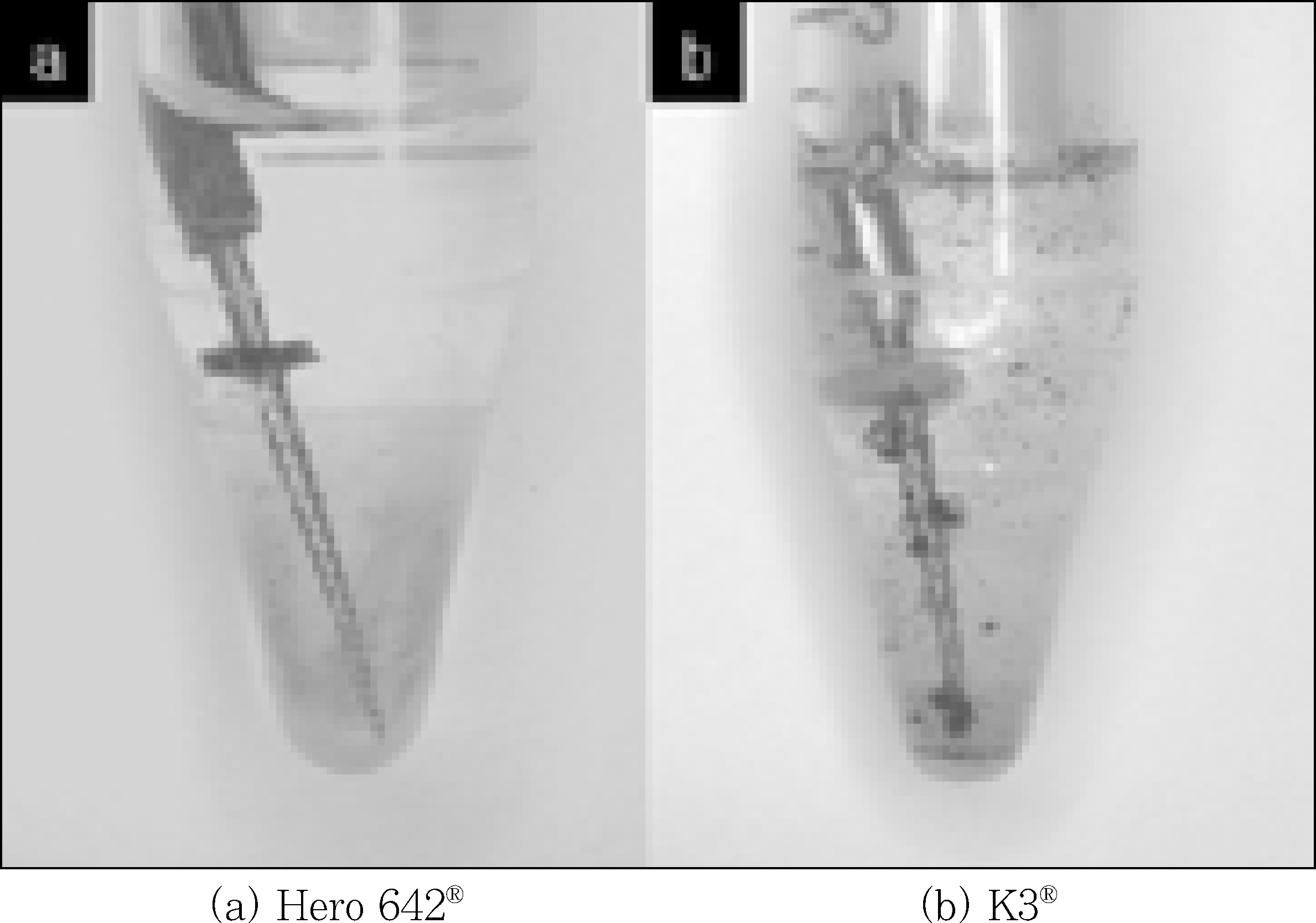

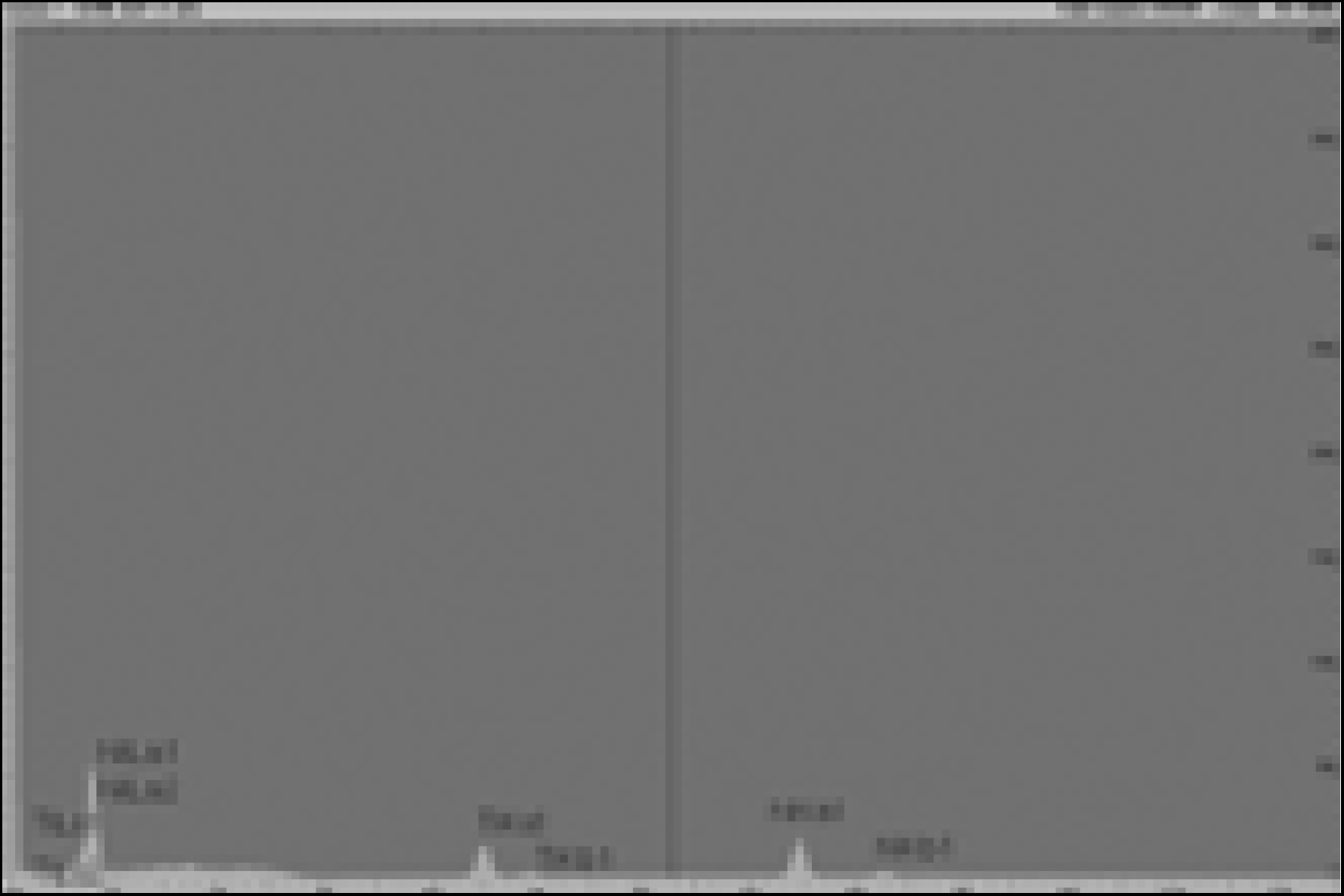
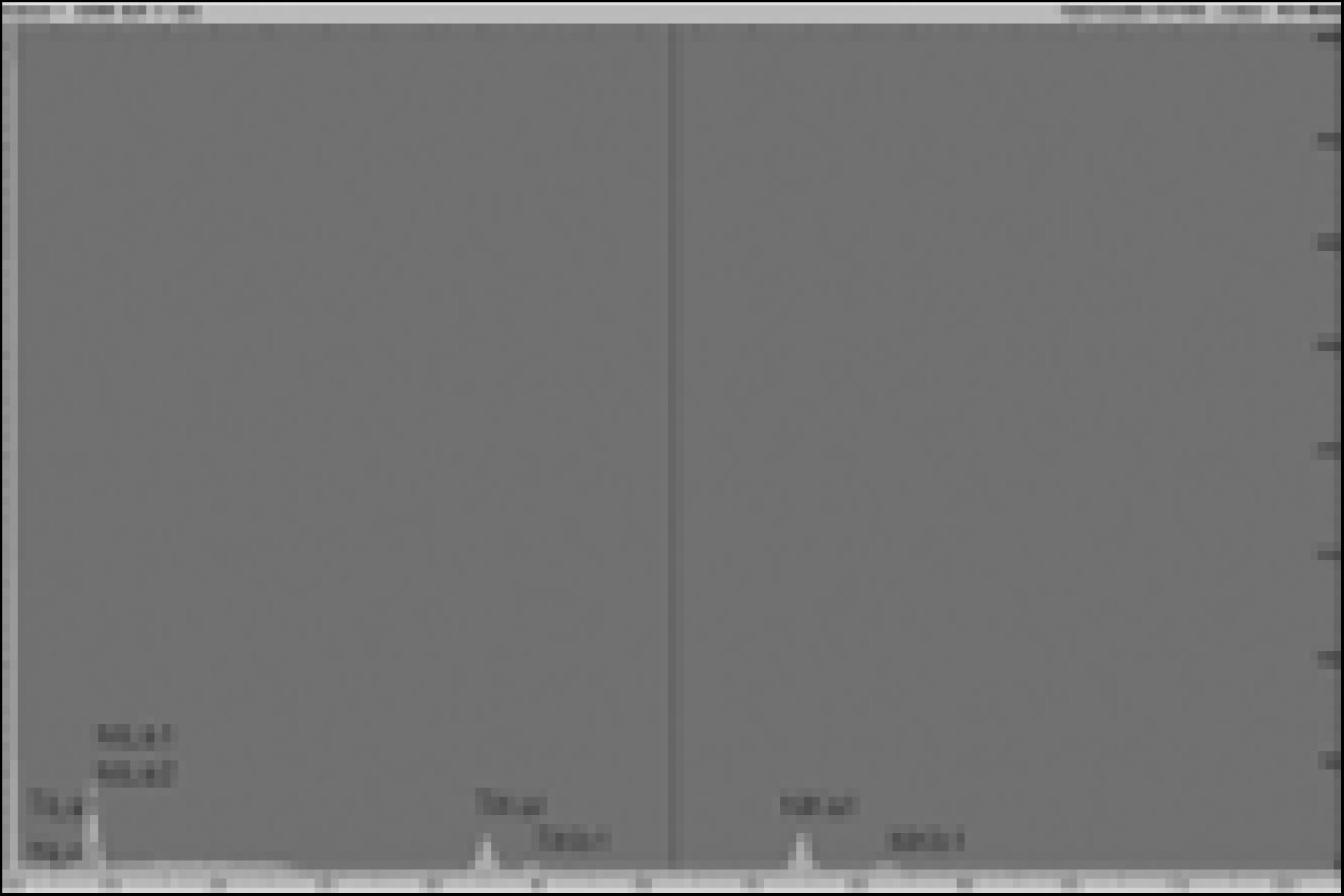
 XML Download
XML Download